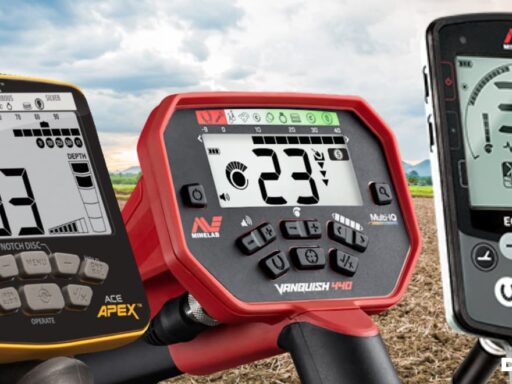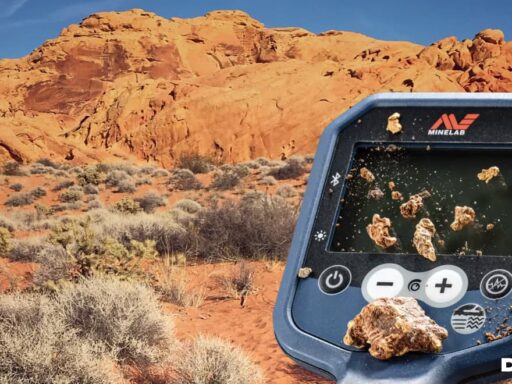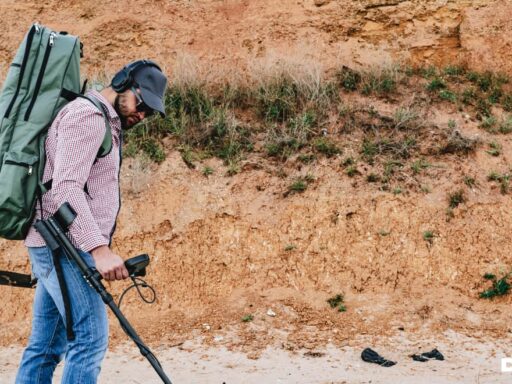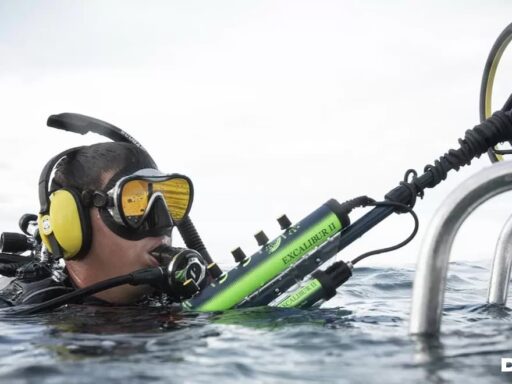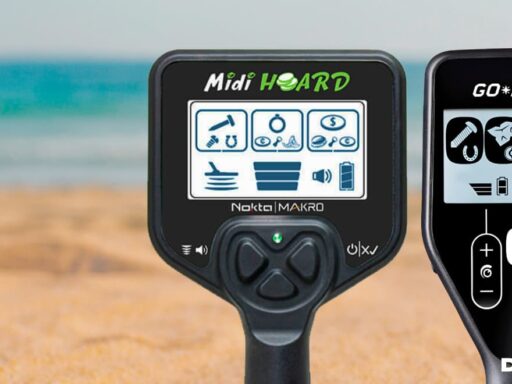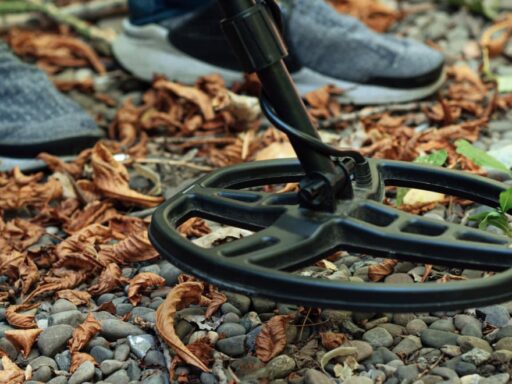Glossary is always useful, regardless of whether you are a beginner treasure hunter or a seasoned detectorist. The first category of readers will find it useful to make head or tail of all the technical terminology and also of complicated slang. The second category of readers will get some advanced skills while learning slang and jargons used by detectorists from other communities or countries.
To avoid the situation when a text on tech specs sounds like gibberish, make sure you look through a list of the most widely used terms in the metal detecting niche. On the other hand, knowledge of slang words will improve your understanding of informal videos, texts, or eventually informal communication with metal detecting buddies.
Technical Terminology
Technical terms are easy to remember as soon as you get used to them. You will find them everywhere in texts and videos, and there is no way to get rid of them when explaining features, functions, or specifications. So make sure you know what every term means, exactly.
A
Air test (Bench test/Field test) – check for metal detector sensitivity by checking signal to objects laid on the ground (not underground).
Alkaline battery – non-rechargeable changeable battery.
All Metal – search mode that makes the metal detector react to any metal object regardless of the type of metal.
Alloy – metal composed of two or more metals mixed together.
Artefact – man-made object, usually an old one.
Audio ID – a mode of metal identification by the tome of sound signal.
B
Backreading – signal given by ferrous metals despite discrimination, because the metals are too close to the coil.
BBS – Broad Band Spectrum technology that transmits from 17 to 28 frequencies at the same time.
BFO – Beat Frequency Oscillation, one of the oldest metal detecting technologies; it is the cheapest and also less effective. Today, mostly used for metal detectors for kids.
Black sand – grounds with high level of magnetic iron oxide.
Bodymount / Hip mount – a setup when control unit is removed from the shaft and is mounted on the belt attached to the body, for better maneuverability.
Butterfly – DD coil variation.
C
Camlock – lock for detector assembly components.
Chatter – noise and interference because of highly mineralized soils, salty sea water, radio signals, power transmission lines, other metal detecting machines nearby, etc.
Coil – also known as Search coil, Loop, or Antenna – metal detector part that senses the targets.
Concentric coil – search coil that has two wires situated in a concentric manner.
Conductivity – amount of current generation created by the coil electric field on the surface of the target.
Control box/Control panel – control and regulation unit of the metal detector; contains battery, control panel, display, etc.
Crosstalk – noise caused by two metal detectors operating in proximity.
Custom mode – an “empty” slot search mode (in contrast to factory modes) that can be customized by the user, to meet their specific needs for unusual settings.
Cut back – loss of depth of reach of the search coil due to high level of mineralization.
D
Depth – the depth to which the electric field of the search coil can reach, or the depth of the target location.
Depth potential/Maximum depth – the maximum depth of reach by metal detector in non heavily mineralized soils.
Digger – a specifically shaped trowel to dig out the finds.
Discrimination – the feature of metal detector that allows to ignore reaction to unwanted targets; then the machine discriminates, it means the coil finds the objects, but does not give signal about them if they meet the set criteria for discrimination.
Double D (DD) – shape of a search coil than looks like two D letters.
Drift – change of depth and sensitivity due to heat, battery charge, etc.
DVT – Dual Voltage Technology patented by Minelab; implying using two different voltages from one coil. This improves ground balance, sensitivity, and depth.
E
Electromagnetic field – an invisible field created by search coil’s generated frequencies.
Elliptical – search coil shape.
F
Factory programs – search modes designed and incorporated by the manufacturer.
False signal / Falsing – signal that looks like a worthy object, but it is not; can be caused by junk, mineralized soils, chatter, faults of the coil, etc.
FBS – Full Band Spectrum technology with multiple frequencies.
Ferrous metals – ironFrequency the measurement of current cycles in the wires of search coil.
Frequency shift – metal detector feature that enables the device to alter the applied frequency a bit, in order to avoid cross talk with neighboring metal detector, other sources of noise, or highly mineralized soil.
G
Gold prospecting – search for gold nuggets or gold dust; a separate niche of detecting that requires tech specs and additional tools.
Gridding – disciplined search according to a pre-set scheme on a limited area of search, with the purpose of scanning this area as thoroughly as possible.
Ground balance – the feature of detector to tune the sensitivity of the coil in order to neutralize the reaction of mineralized soils to electric field, and therefore to find metallic objects easier.
Ground effect – loss of depth or sensitivity due to level of soil mineralization.
Ground reject/Ground compensation – neutralization of ground effect by the metal detector.
Grot – corroded bronze or copper coins.
H
Halo effect – the case when metal detector sees target as bigger than it really is, due to high mineralization of the soils directly around the target.
Hand held/Pole mount – metal detector that can be used only when the control unit is mounted on the shaft (in contrast to bodymount).
Hearing fatigue – due to fatigue, the detectorist may experience a decreased ability to differentiate the signals.
Heel – the part of the search coil behind the attachment point of the shaft.
Hertz – frequency measurement, cycles per second.
Hoard – coins or valuables buried to keep them safe, but obviously never digged out.
Hot rock – rock or rocks that are more highly mineralized than soils around them, and cause noise and false signals.
I
IB – Induction balance, the condition of zero current flow between the transmitting and receiving loops of the search coil before detecting.
K
kHz – currency frequency measurement, one thousand of cycles per second.
L
LCD – Liquid Crystal Display.
LED – Light Emitting Diode.
Littoral – seashore mineralization type from magnetic black sand to conductive salt water.
Loop – loop of wire in the search coil.
M
Masking (target masking) – mixed signal caused by valuable find located behind junk.
Mineralization – the level of minerals contained in soil or seawater.
Mode – state of metal detector, usually search mode meaning certain settings switched on for certain search parameters to be met.
Mono Coil – search coil configuration where both transmitting and receiving wires are combined in a single loop.
Motion Discrimination – discrimination mode that requires motion of the coil in order to activate discrimination feature.
Motion Ground Control – ground control can be achieved only when the coil is in motion.
Multi-Frequency – detecting technology that allows to scan the location with several frequencies at the same time.
N
Neutral Ground – soils with little or no conductive properties.
NiCad – Nickel-Cadmium battery, rechargeable.
NiMH – Nickel-metal-hydride composition rechargeable batteries.
Non-Motion – any feature possible only when the search coil is still.
Noise Cancellation – feature that allows to shift the operating frequency to avoid noise.
Notch Accept – mode of discrimination that accepts only targets which have conductivity falling within notch width indicated.
Notch Discrimination – discrimination against conductivity segments; one can activate or disable certain segments of conductivity rather than simply ferrous metals altogether.
Notch Level – the tool to set the notch width.
Notch Reject – discrimination that rejects only targets the conductivity of which falls within the notch width.
Notch Width/Notch Window – a preset segment of conductivity discrimination to accept or reject.
Null – a phenomenon of metal detecting with ground balance feature, when the audio threshold disappears immediately when the coil passes over a potential target, or a large quantity of iron.
Numismatist – a person who researches and collects coins and / or currencies.
O
One Touch / Turn on and go – switching the metal detector on and off with one button or switch.
Overlap – when the scanning is improved by sweeps overlapping.
Overshoot – when the sweeps are too quick, the detector has no time to identify the discrimination, and shows rejected segment with positive signal.
P
Phase Response / phase lag / phase angle – the time between current emitted by transition loop and response from the target caught by the receiving loop of the coil.
Pinpoint – a search mode, or a separate tool, able to locate the target more accurately.
PI – Pulse Induction. A technology able to ignore mineralization.
Plugging – a method of search when plugs of soil are digged out to explore deeper layers of soils.
Q
Quick Response – time between the coil sensing the metal and full audio response of the detector.
R
Recovery time / recovery speed / reactivity – the time needed for the metal detector to adequately respond to the next target after it has produced a signal for the previous target.
Reject – the ability of metal detector to discriminate unwanted signals.
Rx / Response – electric field that is received by the coil after contact with the target, and is used to process data and provide relevant signal.
S
S handle – control shaft designed for more operator comfort and less fatigue.
Salt Elimination – discrimination of signals from very salty water.
Scan – search coil movement or effective detection of targets.
Scrubbing – pressing the search coil against the ground, usually to gain depth.
Search head – coil.
Search coil cable – cable connecting search coil and control unit.
Sensitivity – tech spec of metal detector combining depth of target location, target size, and qualities.
Signal – audio signal or vibration.
Signal Width – feature of signal for long or wide target.
Scuff cover / coil cover – protective plastic cover for the search coil to prevent damage.
Silent search – ability of detector to produce signal only when spotting a target.
Single frequency – detector that uses only one frequency at a time.
Skid plate – the same as Scuff cover.
Slow motion – a rate of search coil sweep speed necessary to use discrimination effectively.
Slow response – measure of time between metal sensing and peak response of the coil.
Stability – characteristic of a detector to produce adequate signal without noise.
Sweep – movement with the search coil upon the surface.
T
Target – object that gives signal.
Target ID – display that shows what your target could potentially be, according to its previously assessed characteristics.
Target Separation – the ability of the metal detector to respond separately to different targets in close proximity to each other.
Threshold – the threshold is optimal level of tuning after which a faint signal can be heard.
Tone Control – audio tone adjustment.
Tone discrimination – the feature of detector to give different tone to different targets; as a result, the user can choose what target to dig, by the tone it gives.
Tracking Mode – not a search mode, but an automatic mode of the detector to scan and check the level of mineralization during the search, with the purpose of adjusting the ground balance.
Trash – junk on or underground.
Treasure trove – the rule according to which ancient treasures belong to the state.
Turn On and Go – detectors that have mostly preset search modes and other tuning. The detectorist has to basically turn on the device with one button and can start searching.
V
Variable discrimination – discrimination that can be modified by the user.
Visual ID – indications on the display that show the potential value of the target.
Visual Indicator – LED or other signal on the display that tells of a target spotted.
VLF – Very Low Frequency metal detectors of transmitter and receiver type.
Volume Control – audio signal loudness regulation.
W
Wireless headphones – headphone set compatible with metal detector, doesn’t need a cable for operation.
Wireless metal detector – no cable is needed between the detector and the headphones, and also between the search coil and control unit.
Z
Zero Discrimination – same as All Metal, mode when the detector reacts to ferrous metals.
Slang and Jargon
Now, slang words will be of much use when you talk to another detectorist, online or offline. So make sure you understand the basic slang vocabulary below.
Archie, Arkie – archaeologist.
Audio gain – a setting to increase or decrease signal for deeper targets.
Black dirt – dirt rich in organic matter, common for very old sites. Desirable search grounds, as less mineralizedBling – jewelry.
Bottlecap magnet – machine that identifies bottle caps well.
Cache – cluster of coins or objects buried together.
Canslaw – pieces of aluminum cans giving various signals.
Cellar hole – typical for very old houses.
Choppy signal – almost rejected signal that can mean a good target.
Coinball – a chunk of dirt with a coin or other object inside.
Coin shooters – detectorists hunting for coins.
Crusty – a target in poor condition.
Dighole – hole left by detectorists previously hunting on the location.
Dirt fishing – detecting in dirt (in contrast to beach or water detecting).
Drop – dropped bullet.
EMI – electromagnetic interference.
Find – object found.
Flag and bag – finding objects, placing them in bags, and marking the location of find with small flags (typically done by archaeologists).
Freestyling / door knocking – driving from property to property asking permission to metal detect on their grounds.
Gawker – person watching detectorists detecting out of curiosity.
Growl / grunt – sounds of metal detector when reacting to iron.
Hammered site / searched out / hunted out / pounded – searched out many times.
High Tone – a desired clear high tone signal that usually means quality object.
Hockey Puck – a very small search coil used for very littered locations.
Honey Hole – a location that brings good finds again and againIffy – hard to interpret signal, but probably goodKeeper – good metal find.
Low Tone – faint signal that usually means low conductivity targets like gold.
Machine – metal detector.
Magnet fishing – pulling ferrous metals out of the lake or river by using a powerful magnet on a line.
MDing – metal detecting.
Nighthawk – one who detects at night, often illegally.
One-way signal – when the machine gives signal when the coil is swept one way, but not the other.
Overload – too much metal under the coil for the machine to give any comprehensive signal.
Permissions – locations where the detectorist was allowed to hunt.
Plowline – soil on agricultural grounds that is lower than the plows can typically reach.
Pocketspill / coinspill – when several coins fell out of one’s pocket while the person was sitting, and are found together.
Probe / poker – a thin tool used to locate the coins before digging.
Rang up – a signal typical for a type of target.
Rubar – object so rusty it cannot be recognized.
Screamer – high pitch audio signal, but clear and quality.
Skunked – found nothing worthy.
Strip hunting – detecting on the sides of the streets.
Th’er – treasure hunter.
TH’ing – treasure hunting.
Tones machine – metal detector that uses different audio tones and the user has to learn the tones in order to identify the signal effectively.
Tot-lot – park areas designed for younger children; usually rich in lost jewelry.
Virgin site – location that has never been scanned before.
Whatzit – unknown object.
Whispers – faint, barely heard signals, usually indicate depth.


